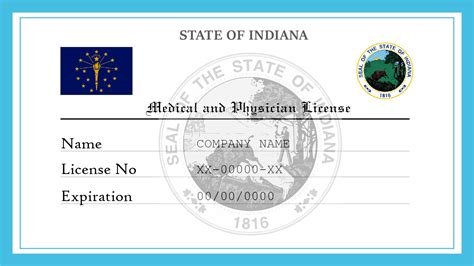Colorado GMU Interactive Map: Explore Hunting Zones Easily
In the heart of the Rocky Mountains, Colorado’s diverse landscapes offer some of the most coveted hunting grounds in the United States. From elk and mule deer to pronghorn and black bear, the state’s wildlife management units (GMUs) are meticulously designed to balance conservation with hunting opportunities. However, navigating these zones can be daunting for both seasoned hunters and newcomers alike. Enter the Colorado GMU Interactive Map, a game-changing tool that simplifies the exploration of hunting zones, ensuring compliance with regulations while maximizing your chances of success.
Why Colorado GMU Maps Matter
Colorado’s GMUs are not just arbitrary boundaries; they are carefully crafted to manage wildlife populations, habitat health, and hunting pressure. Each GMU has unique regulations, including species availability, weapon restrictions, and draw odds. Understanding these details is crucial for planning a successful hunt. Without the right tools, hunters risk missing critical information, leading to wasted time, resources, and potential legal issues.
The Power of an Interactive Map
Traditional paper maps and static digital resources often fall short in providing real-time, detailed insights. An interactive GMU map revolutionizes this process by offering:
- Layered Information: Overlay data such as terrain, water sources, and vegetation to identify prime hunting spots.
- Regulation Updates: Access the latest rules and boundaries for each GMU directly within the map.
- Draw Odds and Harvest Data: Analyze historical success rates to strategize your application for limited-entry units.
- GPS Integration: Sync with your mobile device for on-the-ground navigation, ensuring you stay within legal boundaries.
How to Use the Colorado GMU Interactive Map
Navigating the map is intuitive, even for those unfamiliar with digital tools. Here’s a step-by-step guide:
- Select Your Species: Filter GMUs based on the game you’re targeting (e.g., elk, deer, or bear).
- Review Regulations: Click on a specific GMU to view weapon restrictions, season dates, and tag requirements.
- Analyze Terrain: Use topographic layers to identify ridges, valleys, and water sources where game may congregate.
- Plan Your Hunt: Export maps or sync with GPS devices for offline use in remote areas.
Key Features of the Interactive Map
- Real-Time Updates: Stay informed about boundary changes, road closures, and fire restrictions.
- User-Friendly Interface: Designed for both desktop and mobile, ensuring accessibility in the field.
- Customizable Layers: Tailor the map to focus on specific data points, from public land boundaries to historical migration routes.
Case Study: Planning an Elk Hunt in GMU 201
Imagine you’re preparing for an elk hunt in GMU 201, known for its rugged terrain and high elk populations. Using the interactive map, you:
- Identify Access Points: Locate public land entrances and trails leading into prime habitat.
- Study Topography: Pinpoint high ridges where elk bugle during the rut.
- Check Draw Odds: Discover that GMU 201 has a 15% draw success rate, helping you manage expectations.
With this information, you’re not just hunting—you’re strategizing.
Expert Insights: Maximizing Your Map Usage
“The interactive GMU map is a hunter’s Swiss Army knife. It’s not just about knowing where to go—it’s about understanding why you’re there. Combine terrain analysis with harvest data, and you’ll be miles ahead of the competition.” – John Carter, Wildlife Biologist and Hunting Guide
Comparing Interactive Maps to Traditional Resources
| Feature | Interactive Map | Traditional Map |
|---|---|---|
| Real-Time Updates | ✔️ | ❌ |
| Customizable Layers | ✔️ | ❌ |
| GPS Integration | ✔️ | ❌ |
| Portability | ✔️ (Mobile-Friendly) | ✔️ (Physical Copy) |
Future Trends: The Evolution of Hunting Maps
As technology advances, interactive maps are poised to become even more sophisticated. Expect features like:
- AI-Driven Predictions: Algorithms that suggest optimal hunting locations based on weather, moon phases, and historical data.
- Community Contributions: Crowdsourced insights from fellow hunters, sharing real-time observations on game movement.
- Augmented Reality (AR): Overlay digital information onto your physical surroundings via AR glasses or smartphone apps.
Addressing Common Misconceptions
Myth: Interactive maps replace the need for scouting.
Reality: While maps provide invaluable data, they complement—not replace—traditional scouting methods. Boots-on-the-ground experience remains irreplaceable.
FAQ Section
What is a GMU, and why does it matter for hunting in Colorado?
+A GMU (Game Management Unit) is a designated area managed by Colorado Parks and Wildlife to regulate hunting and conserve wildlife. Each GMU has specific rules, species availability, and draw odds, making it essential for hunters to understand their chosen zone.
Can I use the interactive map offline?
+Yes, most interactive GMU maps allow you to download or sync data for offline use, ensuring accessibility in remote areas without internet connectivity.
How often are GMU boundaries updated on the map?
+Boundaries are typically updated annually, reflecting changes due to habitat management, wildlife population shifts, or regulatory adjustments.
Are interactive maps only for big game hunters?
+No, these maps are useful for all types of hunting, including small game, waterfowl, and predator hunting, as they provide detailed land and regulation information.
Conclusion: Elevate Your Hunting Experience
The Colorado GMU Interactive Map is more than a tool—it’s a gateway to smarter, more efficient hunting. By leveraging its features, you’ll not only navigate GMUs with confidence but also contribute to the sustainable management of Colorado’s wildlife. Whether you’re a first-timer or a seasoned pro, this map is your compass to success in the field. Happy hunting!
